









•


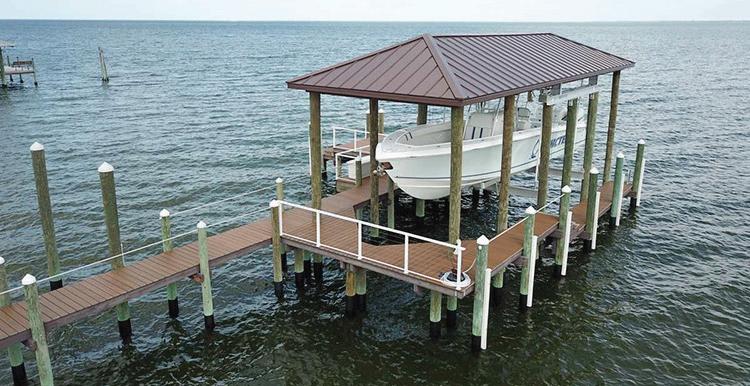


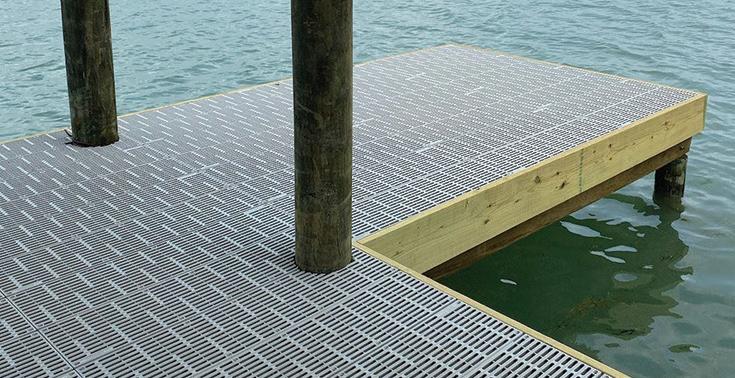







CEO Michael Shepard
VICE PRESIDENT OF CONTENT Leon Espinoza
EDITORIAL DIRECTOR Mike Teegarden, CCC
DEPUTY EDITORIAL DIRECTOR
Noble Sprayberry
SENIOR EDITOR Jennifer Paton, CCC
FLORIDA CURRENTS EDITORS
Chasity Anderson, CCC; Valeri Pearon
ASSISTANT EDITORS Victoria Hampton, CCC; David Herder, CCC
ASSOCIATE EDITOR
Nina Todea
PUBLICATIONS PRODUCTION
SENIOR MANAGER
Elizabeth Beatty
PUBLICATIONS COORDINATOR
Alyssa McDougle
Members acknowledge that $4.31 a year, plus postage, is the cost to publish 12 issues a year of FLORIDA CURRENTS ISSN 23276304 (USPS 8300). Published by Pioneer Utility Resources Inc., 5625 NE Elam Young Pkwy. Ste. 100, Hillsboro, OR 97124—a not-for-profit Oregon cooperative corporation—the magazine serves the communication needs of consumerowned electric utilities in Florida. Preferred Periodicals postage paid at Hillsboro, OR 97123 and at additional mailing offices.
Postmaster: Send address changes to 5625 NE Elam Young Pkwy., Ste. 100, Hillsboro, OR 97124-6422.
HOW TO CONTACT FLORIDA CURRENTS
Subscription services:
Nonmember subscriptions $15 U.S. a year; $25 foreign a year. Prepayment required. Allow 4-8 weeks for first issue. Identify local edition desired. Have a problem receiving your magazine? Utility members should contact their utility office. Nonmembers call 503-357-2105 or email mailingdept@pioneer.coop. Back issues:
Back issues and extra copies are $3 each, prepayment required. Supply is limited. Identify edition, month and year. Call first to check availability. Contact Pioneer Utility Resources: P.O. Box 1306, North Plains, OR 97133-1306; 503-357-2105; email: mailingdept@pioneer.coop.
DISPLAY ADVERTISING INQUIRIES
American MainStreet Publications 611 S. Congress Ave. Ste. 504 Austin, TX 78704-1714; 800-626-1181 or 512-441-5200; amp.coop.
© 2024 Pioneer Utility Resources. All rights reserved. Reproduction in whole or in part without written permission is prohibited. Direct reprint requests to editor@floridacurrents.com or for more information, visit www.pioneer.coop.

April 2024 • Volume 13, No. 6 For additional content, search @FloridaCurrents on your favorite social media sites and floridacurrents.com.


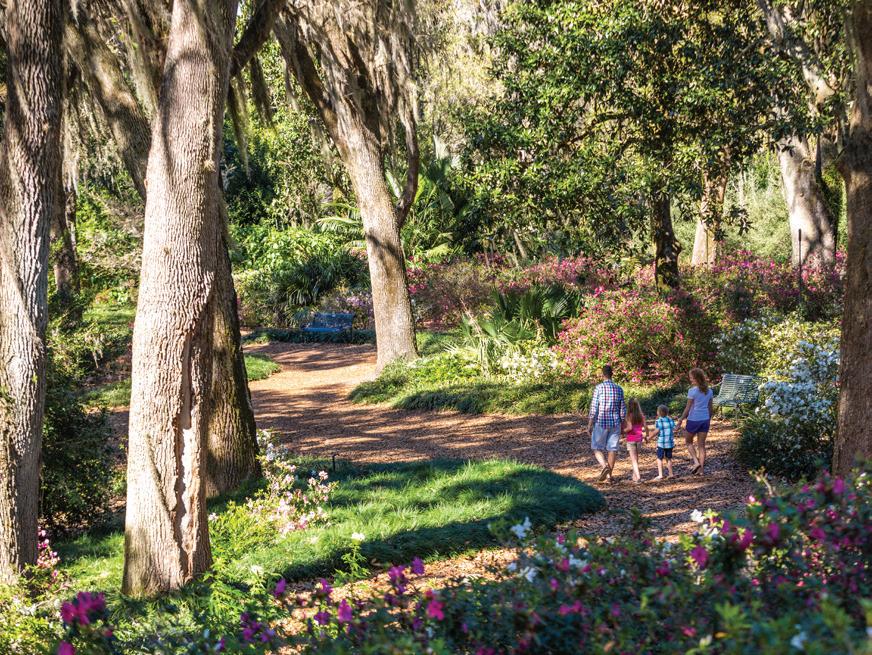

April 18 is National Lineman Appreciation Day, and we are proud to recognize our hardworking linemen at Glades Electric throughout April.
These dedicated men are an essential part of our industry, and work in dangerous conditions to provide members with safe and reliable service.
We have them to thank for installing, repairing and maintaining GEC’s electrical infrastructure, which powers our communities and members’ homes—day and night—365 days a year.
It’s important to recognize their sacrifice and their families given the demands that come with this job. Lineworkers are first responders during storms, putting their own lives on the line to keep the power flowing.
The trade requires years of training to become a lead lineman. It also requires a continuous commitment to safety, attention to detail and precision at all times. They are well-trained and highly skilled professionals.
Glades Electric is grateful for their dedication to members— rain or shine—and thank them for their commitment to powering our communities. n

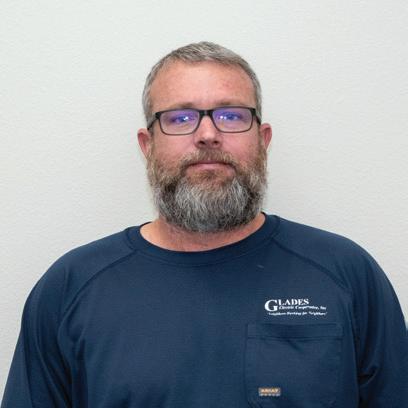

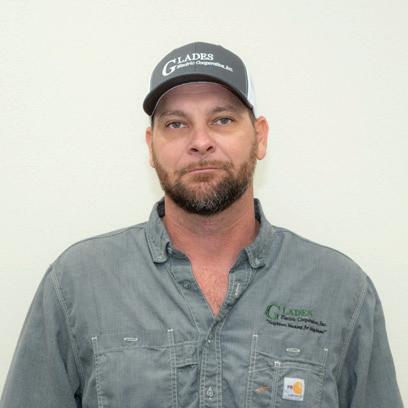





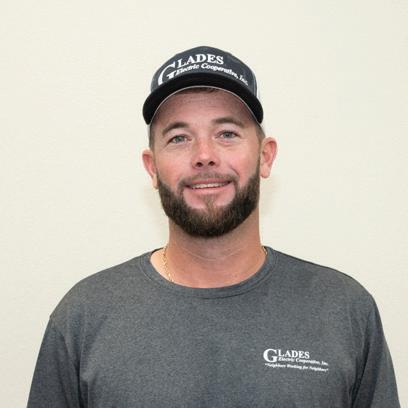



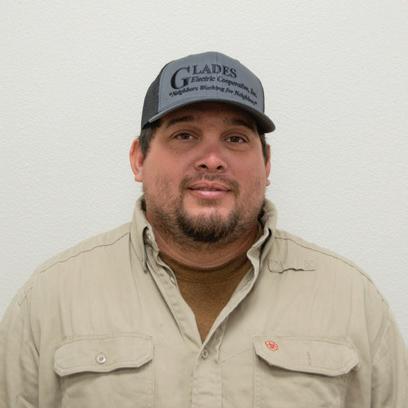
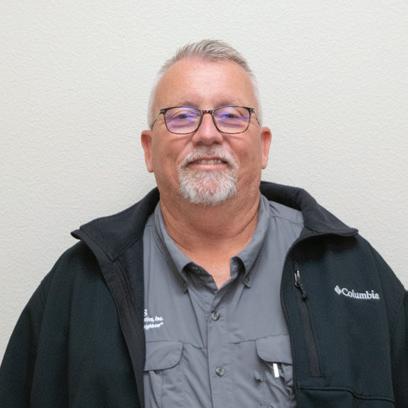
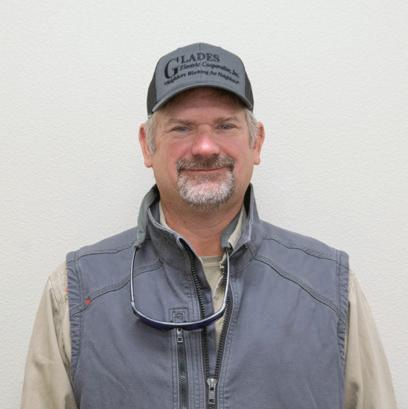


Recognizing the dedicated GEC linemen who keep the lights on






When people think of lineworkers, images of crews with bucket trucks working on power lines most often come to mind.
However, other highly skilled personnel in our substation and metering departments are essential to the delivery of power from substations into homes and businesses.
We also recognize their critical roles in dangerous, skilled positions to power your lives.
Terry Cox Journeyman Substation Tech Roshard Leavy Journeyman Substation Tech Bryan Stafford Certified Substation Tech
Jennifer Harloff Lead Meter Tech Donnie Murphy Journey Meter Tech






Glades Electric Cooperative announced its 2024 National Rural Electric Cooperative Association Washington, D.C., Youth Tour delegates on social media in February with an extra surprise: Three juniors were selected for the honor instead of two.
Lake Placid High School student Andrew Murray and Clewiston High School student Eduardo Ortiz received the surprise announcement at their schools with the help of school staff.
The third student realized he is unable to attend due to a prior commitment.
Youth Tour delegates will learn about the federal government and history of electric co-ops, visit historic sites and museums, and connect with co-op students from across the country during the June 16-21 trip.
It’s an opportunity for Andrew and Eduardo to form lifelong memories. Look for a story on their trip in the August issue of Florida Currents.

Trees are majestic, beautiful and good for the soul. However, tree limbs can interfere with the reliable power our members depend on at their homes and businesses. That’s why Glades Electric Cooperative strives to balance maintaining beautiful surroundings we all cherish with ensuring reliable electricity.
You might not realize it, but there are several benefits to regular tree trimming.
Keeping power lines clear of overgrown vegetation improves service reliability. After all, we’ve seen the whims of Mother Nature during severe weather with fallen tree limbs taking down power lines and utility poles.
While many factors can impact power disruptions, about half of outages can be attributed to overgrown vegetation. This is why Glades Electric vegetation management contractors go out in the community and trim trees near power lines.
These trimming crews have been trained and certified based on the latest industry standards.
In fact, all United States electric utilities are required to trim trees that grow too close to power lines. Scheduled trimming
throughout the year keeps lines clear from overgrown or dead limbs that are likely to fall, and we are better able to prepare for severe weather.
We all know preventive maintenance is more cost-effective than repairs after the fact.
Working near power lines is dangerous, and we care about your safety and that of our lineworkers. For example, if trees are touching power lines in our members’ yards, they can pose a grave danger to families. If children can reach those trees, they can potentially climb into a danger zone. Electricity can arc or jump from a power line to a nearby conductor, such as a tree.
Any tree or branch that falls across a power line creates a potentially dangerous situation. A proactive approach lessens the chances of fallen trees during severe weather that make it more complicated and dangerous for lineworkers to restore power.
As a co-op, Glades Electric always strives to keep costs down for its members. If trees and other vegetation are left
unchecked, they can become overgrown and expensive to correct. A strategic vegetation management program helps keep costs down for everyone.
When it comes to vegetation management, there are ways you can help. When planting new trees, make sure they’re planted a safe distance from overhead power lines. Medium-height trees—40 feet or shorter—should be planted at least 25 feet from power lines. Taller trees—more than 40 feet—should be planted at least 50 feet from power lines.
You can also practice safe planting near pad-mounted transformers. Plant shrubs at least 10 feet from the transformer door and 4 feet from the sides.
If your neighborhood has underground lines, remember to contact 811 before you begin any project that requires digging.
Additionally, if you spot an overgrown tree or branch that’s dangerously close to overhead lines, let GEC know by submitting the issue through the SmartHub app or calling the member services department at 863-946-6200.
We have deep roots in our community and love the beautiful surroundings. Taking a balanced approach, our vegetation management program is a crucial tool in ensuring service reliability. n
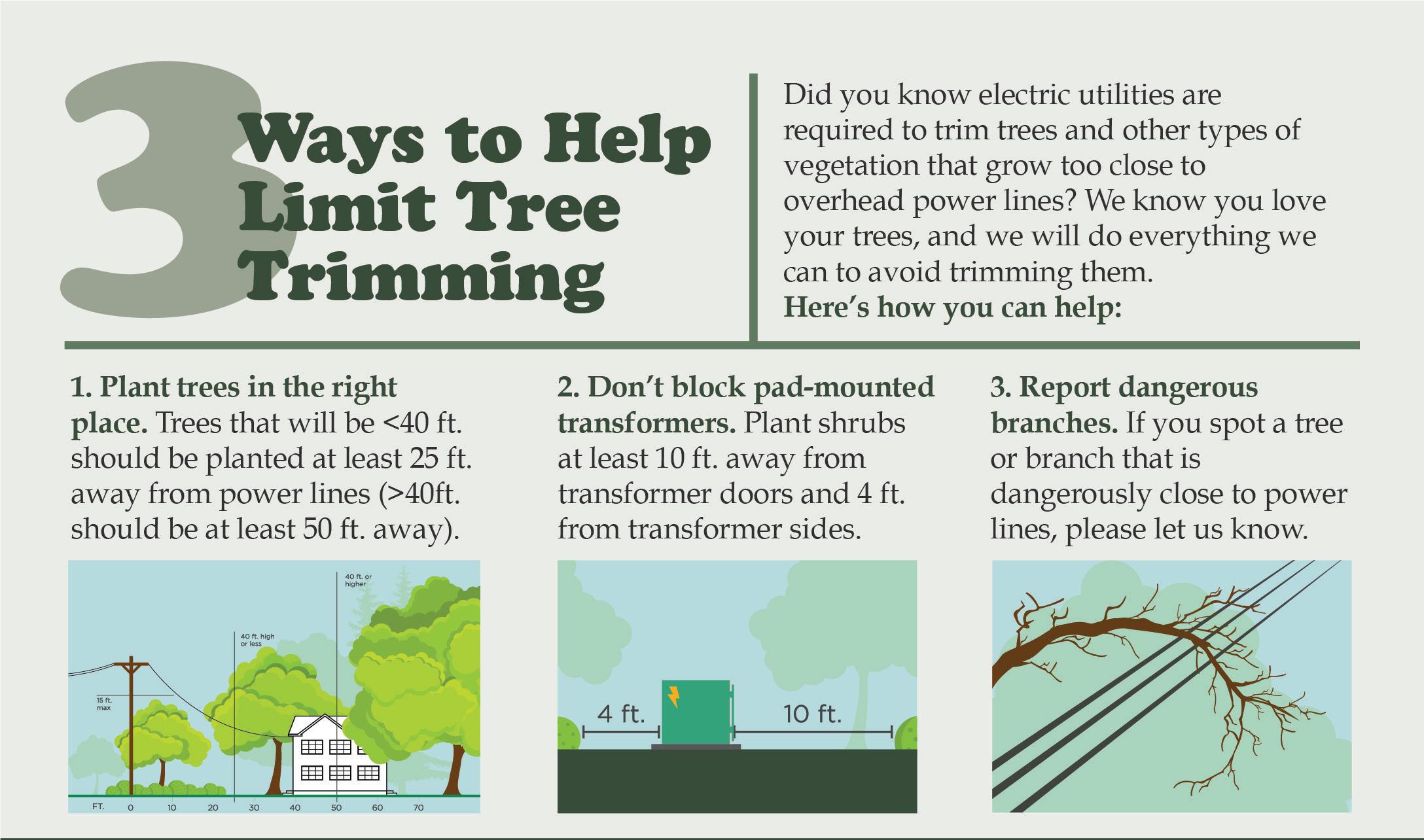



What is it?
Operation Round Up is a program that allows members to round up their monthly bills to fund projects benefiting community members in need.
Nine members serve on the board of directors for Glades Electric Charitable Trust, a 501(c)(3) nonprofit organization. Directors review applications and approve grants.










19
How does it work?
$138 55 cents to your neighbor in need. The average yearly contribution is $6 per member.


Funds from Operation Round Up go right back into the communities we serve.



Number of individuals and organizations awarded Operation Round Up grants in 2023, totaling $68,239.13.

8,247 accounts participate in Operation Round Up or Operation Round Up Plus. Round Up Plus allows members to give even more, adding any set amount, $1 or more, to their bills each month.
45%
How can I help?
Sign up for Operation Round Up in the SmartHub app, scan the QR code, stop by the office or call Member Services at 863-946-6200.




raised through Operation Round Up and Round Up Plus in January 2024.
Did you know?


$4,322.48










How can I get help?














The participation rate it would take to raise more than $70,000 annually to support our communities. 75%
If you or a member you know needs financial assistance, please complete an application at: www.gladeselectric.com/community/operation-round-up.

Full tang stainless steel blade with natural bone handle —now ONLY $79!
The very best hunting knives possess a perfect balance of form and function. They’re carefully constructed from fine materials, but also have that little something extra to connect the owner with nature.
If you’re on the hunt for a knife that combines impeccable craftsmanship with a sense of wonder, the $79 Huntsman Blade is the trophy you’re looking for.
The blade is full tang, meaning it doesn’t stop at the handle but extends to the length of the grip for the ultimate in strength. The blade is made from 420 surgical steel, famed for its sharpness and its resistance to corrosion.
The handle is made from genuine natural bone, and features decorative wood spacers and a hand-carved motif of two overlapping feathers— a reminder for you to respect and connect with the natural world.
This fusion of substance and style can garner a high price tag out in the marketplace. In fact, we found full tang, stainless steel blades with bone handles in excess of $2,000. Well, that won’t cut it around here. We have mastered the hunt for the best deal, and in turn pass the spoils on to our customers.
But we don’t stop there. While supplies last, we’ll include a pair of $99 8x21 power compact binoculars and a genuine leather sheath FREE when you purchase the Huntsman Blade
Your satisfaction is 100% guaranteed. Feel the knife in your hands, wear it on your hip, inspect the impeccable craftsmanship. If you don’t feel like we cut you a fair deal, send it back within 30 days for a complete refund of the item price.
Limited Reserves. A deal like this won’t last long. We have only 1120 Huntsman Blades for this ad only. Don’t let this beauty slip through your fingers. Call today!
Huntsman Blade $249* Offer Code Price Only $79 + S&P Save $170 1-800-333-2045
Stauer® 8x21 Compact Binoculars -a $99 valuewith purchase of Huntsman Blade


Call today and you’ll also receive this genuine

14101 Southcross Drive W., Ste 155, Dept. HBK225-01 Burnsville, Minnesota 55337 www.stauer.com

*Discount is only for customers who use the offer code versus the listed original Stauer.com price.
California residents please call 1-800-333-2045 regarding Proposition 65 regulations before purchasing this product.
Your Insider Offer Code: HBK225-01 You must use the insider offer code to get our special price. • 12” overall length; 6 ¹⁄2” stainless steel full tang blade • Genuine bone handle with brass hand guard & bolsters • Includes genuine leather sheath
Stauer… Afford the Extraordinary ®

What Stauer Clients Are Saying About Our Knives
“This knife is beautiful!” — J., La Crescent, MN
“The feel of this knife is unbelievable...this is an incredibly fine instrument.” — H., Arvada, CO





eyes from damage.
By Pamela A. Keene
If you missed the North American solar eclipse in 2017, another chance to witness this astronomical wonder is just around the corner. On the afternoon of Monday, April 8, a total solar eclipse will cut a swath of twilight across the United States from South Texas northeast to Maine.
“If Floridians want to view the eclipse in totality, the nearest state is Texas, but don’t let that discourage you,” says Hannah Sparkes, planetarium assistant at Bishop Museum of Science and Nature in Bradenton. “Parts of Florida will experience as much as 40% to 60% occlusion—the shadow of the moon blocking this percentage of the sun. Even in South Florida, they will be able to see the effects with the proper safety measures.”
Safety First
Safety when viewing an eclipse is crucial, and there are several ways to protect your
“You must protect your vision if you plan on looking directly at the sun during an eclipse,” Hannah says. “Just a few seconds of its intense light—even when the sun is partially obscured—can result in serious damage to your retina.”
If you don’t have specially designed solar viewing glasses, you can make an eclipse viewer using a piece of paper with a small pinhole to project the changing shape of the sun as the moon passes in front of it.
“Actually, this works with anything that has small holes in it, like a colander, an


index card with a hole punched through it or even loosely overlapped fingers,” says Jose Cotayo, education specialist at the Museum of Science and Industry in Tampa. “Stand with your back facing away from the sun and remember you’re using the hole to project the image onto another surface, not as something to look through.”
Through solar viewing glasses, the eclipse will look like someone has taken a bite out of the sun as the moon’s shadow passes over it. The projected images, whether from a pinhole projector or other device, will be crescent-shaped.
There are two types of solar eclipses. A total eclipse results when the moon’s shadow completely covers the sun. An annular eclipse occurs when the moon’s shadow obscures all but the sun’s outer edge, making it look like a bright ring in the sky for a few moments.
“This upcoming solar eclipse is important for several reasons,” Jose says. “First, it is the second total solar eclipse to cross North America in the past seven years. Second, it will be seen by tens of millions of people. Third, for us in the contiguous United States, it will be the last total solar eclipse to cross our continent until August 12, 2045.”
The width of the path of totality of this year’s total eclipse will be wider than in



2017 because the moon is closer to Earth this time. It will take longer for the moon’s shadow to pass in front of the sun, and totality will last a bit longer.
The path of totality will cover three countries, starting in Mexico, traveling across Texas and continuing northeast through nearly a dozen states plus parts of several Canadian provinces.
In the weeks leading up to the April 8 event, Bishop Museum of Science and Nature has offered live planetarium shows





about the eclipse and updates to its social media at @BishopScienceFL.
Catch the Eclipse
The Museum of Science and Industry in Tampa will celebrate the eclipse with the following events April 8:
• Sun-safe telescopes. Experts will be available from 1:30 to 4 p.m.
• Livestreams from various locations across the country.
• Hands-on activities in the Ritual Observatory.
• Eclipse glasses will be on sale for $5, or you can bring your own.
• The event is included with museum admission.
For more information, visit Bishop Museum of Science and Nature in Bradenton at bishopscience.org and Museum of Science and Industry in Tampa at www.mosi.org. For general information, maps and specific eclipse information, visit greatamericaneclipse.com. To find the times for a specific city, go to eclipse2024.org/eclipse_cities.








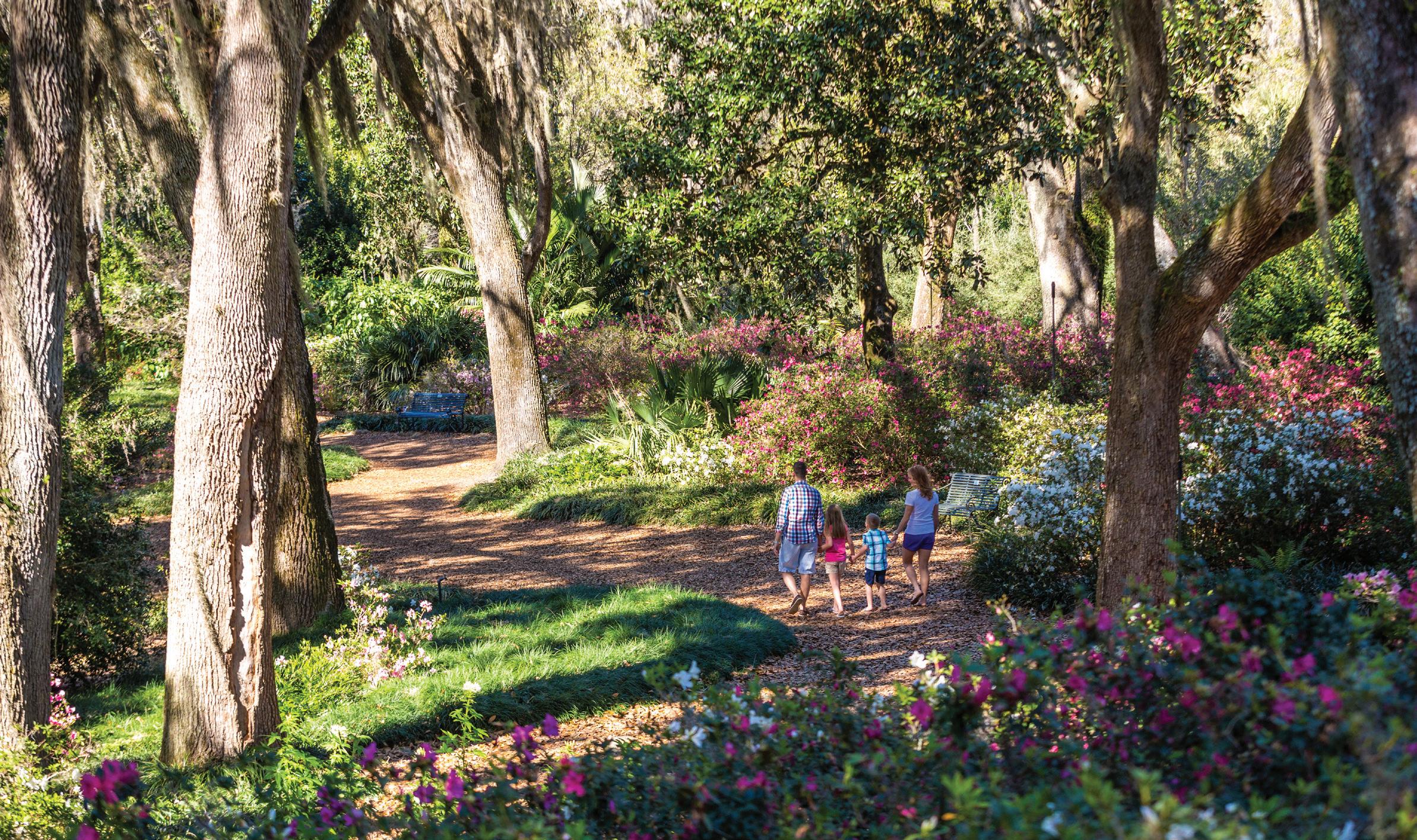
By Pamela A. Keene
Sixty bronze carillon bells collectively weighing more than 63 tons make beautiful music at Bok Tower Gardens in Lake Wales. Emanating from the 205-foot pink-and-gray marble bell tower at the gardens, twice-daily concerts feature classical compositions from the 17th through 21st centuries, as well as jazz, pop, country and other music genres.
“Bok Tower Gardens is a serene place of beauty, culture and history, but it is so much more than that,” says Erica Smith, director of marketing and public relations at Bok Tower Gardens. “From our acres of colorful gardens and our carillon tower to El Retiro retreat and Hammock Hollow Children’s Garden, visitors are finding more reasons than ever to visit.”
Several years ago, an area was set aside specifically for children. Fairy doors, whimsical musical instruments, winding paths, edible gardens and interactive activities pique the interest of youngsters yearning to explore nature hands-on.
“Hammock Hollow’s 3 acres include touch-and-feel activities, so children can experience the different textures of plants, and they can taste the plants in the edible section,” Erica says. “We also host programming—from planting to arts and crafts projects related to gardening—to help them learn where their food comes from.”
The River Walk section’s interactive water fountain area, where children can climb and play, mimics Florida’s geology. The Fairy House Trail opens a new world of fantasy, and the Frog Hop promotes being active. Sabal Stage encourages role-playing.
“In addition to giving children a place of their own, Hammock Hollow teaches them about nature and conservation,” Erica says. “The premise is discoverybased learning and an appreciation for natural beauty.”
A larger-than-life bird’s nest, complete with artistcreated sand jay eggs, welcomes children to enter. Near the Visitors Center, Hammock Hollow features an outdoor kitchen and a discovery center.
Known in the 1930s as El Retiro, the former winter home of Bethlehem Steel executive S. Austin Buck, is open for self-guided tours.
The gardens acquired the 20-room, 12,900-squarefoot retreat in the 1970s and restored the house and grounds, then known as Pinewood Estate. The name was changed back to El Retiro, the Spanish word for retreat.
“El Retiro is an excellent example of Mediterraneanstyle architecture with thick walls, a barrel-tile roof, carved doors, extensive woodwork and detailed wrought iron,” Erica says. “It’s a perfect complement to Bok Tower Gardens.”
Many of the furnishings in the home are original.
“A visit to El Retiro is truly a step back in time,” she says.
Nearly 100 years ago, Edward W. Bok conceived of a garden sanctuary to leave a legacy of thanks to his adopted country, the United States. He was a Pulitzer Prize-winning author, humanitarian and publisher of Ladies’ Home Journal after emigrating from the Netherlands at age 6.
Edward and his wife, Mary Louise Curtis, lived most of the year in Philadelphia, but the couple wintered in Central Florida’s Mountain Lake, about 10 miles from the site of today’s Bok Tower Gardens. In 1921, Edward climbed the tallest hill near his winter home, bought the land and commissioned famed New York City landscape architect Frederick Law Olmsted Jr. to create a wildlife sanctuary and garden. Work began in 1924.
“Olmsted designed the gardens to be both a retreat and an informal woodland setting with beautiful vistas, peaceful resting places and a constantly changing work of art by planting acres of ferns, palms, pines and oaks,” Erica says. “Against that lush backdrop, he brought in azaleas, camellias and magnolias for seasonal color.”
During the next several years, Edward enlisted other well-known architects, artisans and craftspeople to help refine his vision.
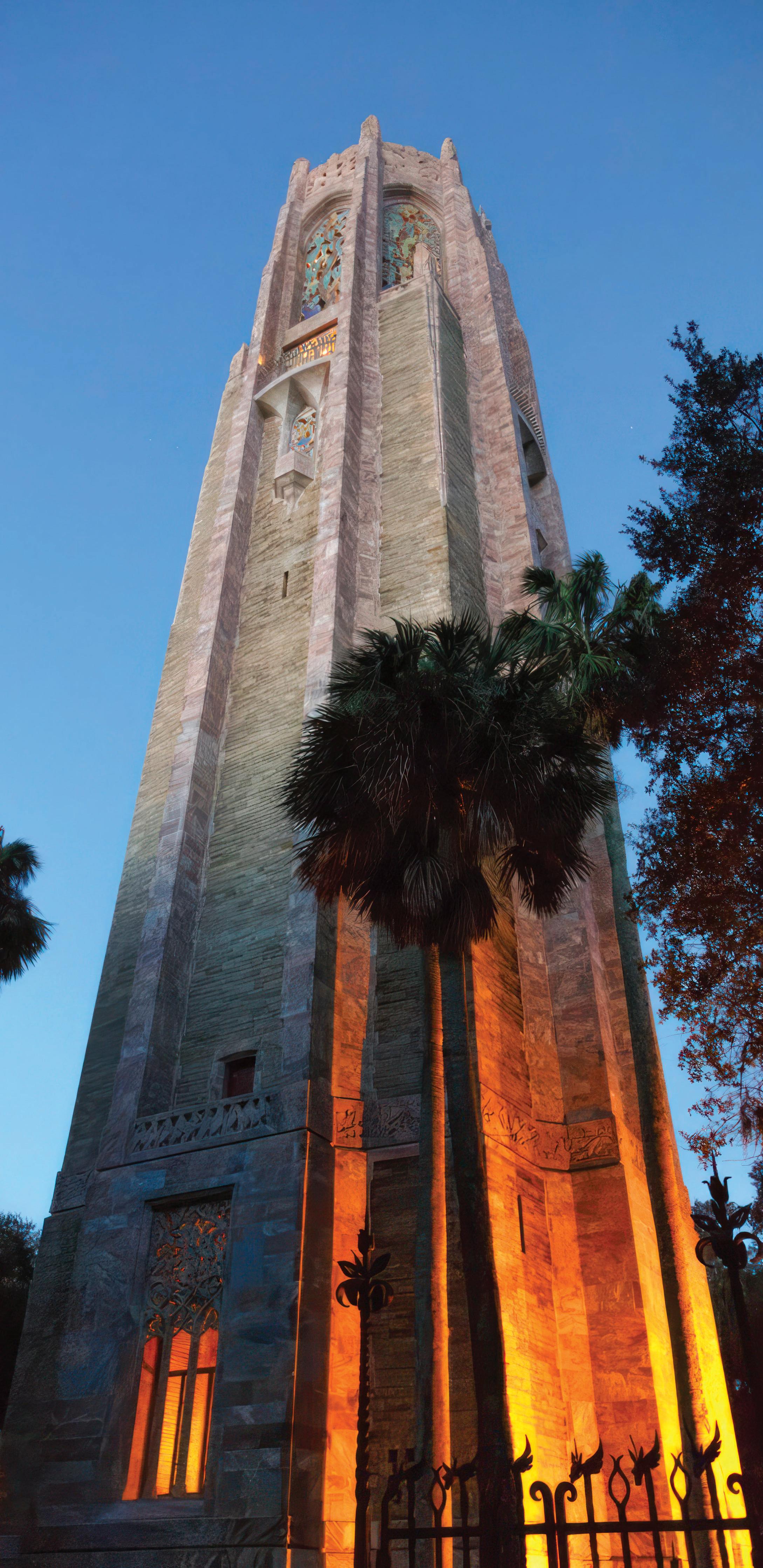

Perhaps the most important element of the gardens, the carillon tower, was added late in the process, with construction beginning in 1927 and completed in late 1928.
Philadelphia architect Milton B. Medary was commissioned to design the tower. His firm had designed the Justice Department building in Washington, D.C., and the Washington Memorial Chapel at Valley Forge.
“Bok’s project gave Medary the opportunity to blend Gothic architecture with elements that represented nature, including coquina stone from St. Augustine, pink-and-gray marble from Tate, Georgia, sculptures and a brass door designed by metalworker Samuel Yellin,” Erica says. “The tower became an incredible work of art created by some of the best craftspeople of the day.”
The tile grills covering the openings of the bell chamber were

ABOVE: Concerts under the stars also bring in crowds.
conceived by the founder of Enfield Pottery and Tileworks, J.H. Dulles Allen. He designed open panels showing native birds, animals, trees, turtles and human figures in shades of turquoise, cobalt and neutral colors.
Since the gardens opened, four carillonneurs have brought the Bok Tower carillon to life. Edward selected the first, and longest-serving musician, Belgium-born Anton Brees, to be the bell master beginning in 1929—first performing at the dedication on February 1, 1929. Anton served as carillonneur until his death in 1967.
“Brees performed around the globe and helped bring attention to Bok Tower Gardens and our fine carillon,” Erica says. “It has an excellent reputation around the world.”
In 2012, another Belgium-born carillonneur, Geert D’hollander, was chosen to carry on the tradition.

The Bok carillon was the first in Florida. It’s also the tallest. Two others exist: the 61-bell, 157-foot-tall Century Tower at the University of Florida in Gainesville and the 97-bell, 200-foot Stephen Foster Memorial Carillon at the Stephen Foster Folk Culture Center State Park in White Springs.
“As the centerpiece of our 250-acre gardens, the carillon and its music contribute to our beauty, culture and heritage,” Erica says. “It’s hard to describe. For people visiting the first time, the sounds of the carillon and the beautiful surroundings are almost ethereal. Unless you’ve traveled overseas, you’re not very familiar with the carillon.”
She is quick to point out that a carillon is a musical instrument invented in the 16th century in what is now Belgium.
“Many people mistakenly believe that it’s a bell tower with chimes or that they can ascend its 205 feet for distant views of central Florida, but it is a fine musical instrument,” Erica says. “In fact, carillons are the largest musical instruments in the world.”
Carillons are played on a keyboard and with foot pedals. Twice daily, the carillon bells ring out in 30-minute concerts,

The first time carillonneur Geert D’hollander played the Bok Tower carillon was in 1980. He and his father, also a carillonneur, traveled from their native Belgium to Lake Wales to experience the renowned instrument. Geert was 17 years old at the time.
“As a child, I often accompanied my father, Joseph, to work as he played the carillons of historic European bell towers,” he says.
“When I turned 13, I decided I wanted to learn to play the carillon, so I enrolled in the Royal Carillon School in Mechlin, Belgium, where my father taught. I graduated at age 17, and my father flew me to Florida and Bok Tower that same year. He said he wanted me to experience the world’s most beautiful carillon.”
During that trip in the 1980s, both father and son performed on the world-famous 60-bell carillon before heading home.
Twenty-two years later, Geert returned to Winter Park, this time as Bok’s fourth carillonneur. He readily admits he’s glad that Bok Tower has an elevator.
“After 25 years of climbing steps in European bell towers, I was definitely ready for an elevator,” he says. “Playing the carillon—we play with our fists instead of our fingers—is very physical, but sometimes climbing the steps is harder than playing.”
performed from inside the bell tower. The bells also play on the hour and the half-hour.
Bok Tower Gardens Today
Edward’s vision of honoring his adopted country with a native garden, wildlife refuge and musical showplace has brought more than 23 million visitors from around the world to Central Florida.
It is in Lake Wales, on one of the highest points on the Florida peninsula, and features more than 200 acres of gardens and hiking trails. Combined with the height of the hill on which it sits, the top of the tower is 295 feet above sea level. It is listed on the National Register of Historic Places and is a designated site on the Great Florida Birding Trail.
Throughout the year, workshops include birdhouse-making, painting, edible landscaping and specialized guided botanical and garden tours.
Daily carillon concerts—typically featuring classical music—are at 1 p.m. and 3 p.m. n
For more information, visit boktowergardens.org or call 863-676-1408.




Poached Egg Tostadas With Avocado-Tomatillo Salsa
Nonstick cooking spray
4 6-inch corn tortillas
4 cups water
Salsa
1 medium avocado, diced
1 medium Anaheim or poblano pepper, seeds and ribs discarded, diced
1 medium tomatillo, papery husk discarded, washed and diced
½ medium tomato, diced
1 tablespoon white vinegar
4 large eggs
¼ cup diced red onion
¼ cup chopped fresh cilantro
2 tablespoons fresh lime juice
1 medium garlic clove, minced
1⁄8 teaspoon salt
Heat oven to 400 F. Line baking sheet with aluminum foil. Lightly spray foil with nonstick cooking spray. Arrange tortillas in a single layer on foil. Lightly spray tortillas with nonstick cooking spray. Using a fork, pierce tortillas to prevent them from filling with air. Bake for 5 to 6 minutes on each side or until golden brown. Transfer to serving plates.
In a large skillet over high heat, bring water and vinegar to a boil.
Once water is boiling, reduce heat and simmer. Break egg into a cup, then carefully slip egg into simmering water. Repeat with remaining eggs, avoiding eggs touching in water. Simmer for 3 to 5 minutes, or until egg whites are completely set and yolks are beginning to set but aren’t hard. Using a slotted spoon, remove the eggs to a plate.
To make the salsa: In a medium bowl, gently stir together avocado, pepper, tomatillo, tomato, red onion, cilantro, lime juice, garlic and salt. Spoon onto the tostadas, then top each tostada with an egg. Recipe and photo source: American Heart Association
1 pound potatoes, peeled and diced or shredded
2 tablespoons extra-virgin olive oil
½ cup diced red onion
2 cloves garlic, minced
4 large whole eggs, lightly beaten
2 egg whites, lightly beaten
2 tablespoons finely chopped fresh parsley
2 tablespoons finely chopped fresh basil
2 tablespoons finely chopped fresh chives
Salt, to taste
Fresh parsley sprigs, for garnish
Place potatoes in a large pan. Cover with water. Bring to a boil and cook, uncovered, for 3 minutes. Remove from heat. Cover. Let stand for about 10 minutes or until potatoes are tender. Drain well.
Heat oil in a deep, 10-inch nonstick skillet over medium heat. Add onion and garlic. Cook for about 8 minutes, stirring occasionally. Add potatoes and cook for 5 minutes. Combine whole eggs and egg whites. Stir in parsley, basil and chives. Season with salt, to taste. Pour mixture over potatoes in the hot skillet. Reduce heat and cook, uncovered, for about 10 minutes or until the bottom of the omelet is golden.
If desired, brown the top under a broiler. Garnish with fresh parsley sprigs.
Source: culinary.net
2 teaspoons canola oil
1 small red onion, diced
1 red bell pepper, seeded and diced
1 can black beans, drained and rinsed
¼ teaspoon red pepper flakes
Salt, to taste
Pepper, to taste
4 eggs
4 egg whites
½ cup shredded pepper jack cheese
Nonstick cooking spray
4 flour tortillas
¼ cup sour cream
¼ cup salsa
1 large tomato, seeded and diced
1 avocado, sliced
Hot sauce
In a large skillet, heat canola oil over medium heat. Add red onion and red bell pepper. Cook for 8 minutes. Add black beans and red pepper flakes. Cook for 3 minutes. Season with salt and pepper, to taste. Transfer to dish. In a medium bowl, whisk eggs and egg whites. Stir in cheese until combined. Heat a large skillet over low heat. Add egg mixture and scramble for 3 minutes or until cooked through.
Spread sour cream over the tortilla. Spread salsa over sour cream. Spoon ¼ bean mixture over salsa. Spoon ¼ scrambled eggs over the bean mixture. Top with diced tomatoes and avocado. Drizzle with hot sauce, if desired. Roll up burrito. Repeat three times with the remaining ingredients.
Source: culinary.net
4 large eggs
¼ cup fat-free milk
2 tablespoons chopped fresh cilantro
1 teaspoon olive oil
2 medium poblano peppers, seeds and ribs discarded, chopped
2 cups frozen corn, thawed
2 medium green onions, chopped
¼ cup finely shredded cotija cheese or crumbled queso fresco
1 medium tomato, chopped
¼ cup fat-free sour cream
In a medium bowl, whisk eggs, milk and cilantro. Heat oil in a medium skillet over medium heat, swirling to coat the bottom of the skillet. Cook poblano peppers for 3 minutes or until browning on edges, stirring frequently. Stir in corn and green onion. Reduce heat to mediumlow. Carefully pour in egg mixture. Cook, covered, for 10 minutes, or until the mixture is just set on the edges and still soft in the center. Avoid overcooking. Remove from heat. Sprinkle with cheese. Cut into eight wedges. Top with tomatoes and sour cream.
Source: American Heart Association
2 teaspoons canola oil
½ medium onion, chopped
4 medium sweet potatoes, peeled and cut into ½-inch cubes
½ medium red or green bell pepper, chopped
2⁄3 cup fat-free, low-sodium vegetable broth
2 teaspoons minced garlic
2 teaspoons smoked paprika
1 teaspoon ground cumin
½ teaspoon dried thyme, crumbled
½ teaspoon coarsely ground pepper
1⁄8 teaspoon salt
4 large eggs
Hot pepper sauce
Heat oil in an electric pressure cooker set on saute. Cook onion for 3 minutes or until soft, stirring frequently. Turn off the pressure cooker.
Stir in potatoes, bell pepper, broth, garlic, paprika, cumin, thyme, pepper and salt. Secure lid. Cook on high pressure for 3 minutes. Quickly release pressure. Turn off the pressure cooker.
Remove the pressure cooker lid. Crack one egg into a small bowl. Using the back of a spoon, make a small well in potatoes. Slip the egg into the well. Repeat with the remaining eggs, making separate wells for each egg. Secure the lid with the pressure vent open. Saute for 2 minutes. Let stand on the keep-warm setting for 2 minutes or until eggs are cooked to desired consistency.
Serve hash sprinkled with a dash of hot pepper sauce.
Source: American Heart Association

By Dave LaBelle
They scrub and vacuum our floors, clean our desks and windows and toilets. But we don’t really see them, even when we watch them working.
These are the invisible heros.
I recently learned that 87-year-old Shirley Vorwald was still washing dishes and cleaning at a nearby elementary school, as she had also done

Renowned author, photographer and lecturer Dave LaBelle has captured special moments for more than half a century. For more of his writings, visit davidlabelle.com and bridgesandangels.wordpress.com.
the past 48 years.
When I asked about Shirley from those who knew her well, all agreed she was a tireless worker and charitable giver. But they warned she would never let me do a story on her because “she is an introvert and is not likely to talk with you.”
They were wrong, at least about talking to me.
Shirley was cordial and talkative, and even invited me into her small home, showing me every detail—living room, bathroom, bedroom, kitchen, even the smaller-than-standard oven in which she bakes hundreds of pies each year. Besides holding down at least two jobs most of her life, she loves to bake pies for people.
In fact, some only know her as the pie lady.
Never married, she says with no bitterness, “My dad didn’t believe in marriage. He didn’t want to lose his help on the farm.”
Shirley is the last of nine children. Her brother, Jerry, died recently at age 92. The day before Christmas, she baked him a birthday cake he never got to eat.
“He was in bed. He could see it but he couldn’t eat it,” she shares.
She is content. Working has been and is her life since growing up on a farm. At a time in life when most count the days to retirement, Shirley just wants to keep working. n

LEFT: NIKON D800, 50mm lens ISO 2000, f/9 at 1/60
ABOVE: NIKON D800, 31mm lens ISO 2000, f/3.5 at 1/250
Find an unseen hero in your community and shine a light on them. Explain to them that you see and appreciate them for what they do. You might have to persuade them since these invisible people can be shy. Honest, caring persistence can crumble those walls of distrust. Ask if you can interview them and do a portrait or even a short story about them. It is often easier to get shy people to talk than agree to be photographed, so talk first before asking about pictures.
Email your best image (just one, please) with caption information, including an explanation of how it affects you, to GPH@pur.coop. We may share submissions on our website and social media channels.



You read that right. If you’d like the Stauer genuine 26" cultured pearl necklace for FREE*, all you need to do is call us today. There is no catch. This stunning, romantic necklace never goes out of style. In a world where some cultured pearl necklaces can cost thousands, we’re offering ours for FREE*.
Stauer has had a very good year and it’s time for us to give back. That’s why we’re offering this stunning, 26" strand of genuine cultured white pearls for FREE! You pay only $24.95 for shipping & processing, our normal fee for a $295 necklace ... and we’ll even pay you back with a $30 Discount Certificate –– that’s our BETTER THAN FREE Shipping!


Why would we do this? Because we are so sure that you will become a loyal Stauer client in the years to come. Recently, we encountered a magnificent cache of cultured freshwater pearls at the best price that I have ever seen. Our pearl dealer was stuck. A large foreign luxury department store cancelled a massive order at the last minute. In their stead we grabbed all of those gorgeous pearls. He sold us an enormous cache of his roundest, whitest, most iridescent cultured 6 ½-7 ½ mm pearls for pennies on the dollar. His loss is your gain.

Too good to pass up. Too good to last long. Genuine cultured freshwater pearls are a luxurious statement. Stauer finds a deal this outrageous once every few years. We have sold over 200,000 strands of pearls in the last several years and this is our finest value ever. There is only a limited quantity left in stock, so when they’re gone, they’re GONE! Call to reserve your FREE Cultured Pearl Necklace today and experience a brilliant new definition of price-less luxury!
Mitsuko® Cultured Pearl Necklace: Mitsuko® Cultured Pearl Necklace (26” strand) $295** FREE*
*Pay only shipping & processing of $24.95. Special price only for customers using the offer code.



“I couldn’t believe it, but decided to call and I’ve not been disappointed since. I received the necklace and keep coming back for more.”
— Amy, Fairmont, WV
















One
For many hunters, spring means turkey season. Some hunters strive to achieve a turkey grand slam by bagging at least one of the four wild turkey subspecies living in the United States: eastern, Rio Grande, Merriam’s and Osceola.
To achieve a grand slam, hunters must visit Florida. Two subspecies live in the Sunshine State: eastern and Osceola. The Osceola turkey is named after the Seminole war chief.
Eastern wild turkeys are found anywhere from the Great Lakes to the Gulf of Mexico and from New England to Eastern Texas, including all of the Florida Panhandle. However, Osceola turkeys only live in the Florida Peninsula and nowhere else in the world.
“Any wild turkey harvested within or south of the counties of Alachua, Bradford, Clay, Dixie, Duval, Gilchrist and Union would be an Osceola subspecies,” says Juliana Ofalt, the Florida Fish and Wildlife Conservation Commission Wild Turkey and Furbearer Management Program coordinator. “North of the peninsula and across the panhandle, Osceola wild turkeys interbreed with the eastern subspecies.”
Both subspecies look similar, with only subtle differences in appearance. Generally, location determines an eastern from an Osceola.
“An Osceola wild turkey is best distinguished from the eastern subspecies, which it closely resembles, by the white barring on its wing feathers,” Juliana says. “On Osceola wild turkeys, the white bars on the primary wing feathers are narrower than the black bars and are irregular or broken, which tends to give the wing an overall darker appearance compared to eastern wild turkeys. Osceola wild turkeys tend to be smaller-bodied than most eastern wild turkeys,


Eastern, left, and Osceola turkeys, above, call the Sunshine State their home. PHOTOS COURTESY OF NATIONAL
and are often found to have longer legs and spurs.”
Both subspecies love forests. They can live in swamps, hardwood bottomlands or pine forests, and they like edges, fields and openings. Wild turkeys regularly roost in oak, cypress or other trees along waterways to keep safe from predators, such as bobcats. In southern Florida, turkeys may encounter Florida panthers.
During the 2023 spring turkey season, hunters bagged 11,382 birds of both subspecies. People hunt thousands of acres on public lands throughout Florida, but for Osceolas they stay south.
“The top 10 wildlife management areas in the Osceola range with the highest number of reported harvested birds during the 2023 spring turkey season included Three Lakes, Kissimmee Chain of Lakes Area and Richloam,” Juliana says. “The top 10 WMAs with the least number of hunter days per turkey harvested during the 2023 spring season included Guana River, Spirit of the Wild and Okaloacoochee Slough.”
The FWC, in cooperation with the Northwest Florida Water Management District, offers hunting opportunities at a new Water Management Area, Garcon Point, which will include spring turkey opportunities during the 2024 season.
Regulations might differ from private lands and public lands. Therefore, before hunting anywhere, check the regulations for that area.
For turkey hunting zones, season dates and other regulations, visit myfwc.com/hunting/season-dates.

John N. Felsher is a freelance writer, broadcaster, photographer and editor. An avid sportsman, he’s written more than 3,500 articles for more than 170 different magazines on a wide variety of outdoor topics. He also hosts an outdoor tips show for WAVH-FM Talk 106.5 in Mobile, Alabama. Contact him at j.felsher@hotmail.com or through Facebook.


















All ages can find something new and exciting around every corner of the state. Filled with rich history, abundant natural beauty and diverse events all year, Florida has something fun for everyone.
March 31
Easter Bunny Boat Parade
Join the boat parade or cheer from the shoreline of Lake Josephine. Line up at 4 p.m. at the opening of Josephine Creek. This event has been spreading joy and celebrating Easter for more than 20 years. www.twstages.com; 863-991-5545
April 2
Dinosaur World, Live!

April 6
Tour de Fort: Fort Pickens

Dare to experience the dangers and delights of Dinosaur World Live in this roarsome interactive show for all the family. Discover a prehistoric world of remarkably lifelike dinosaurs. A special meet-and-greet after the show offers all brave explorers the chance to make a new dinosaur friend.
www.twstages.com; 305-295-7676

April 19-21
Ladies, Let’s Go Fishing
Ladies, join in on the fun with this offshore fishing event. The weekend kicks off with a meetand-greet on Friday, followed by a full-day offshore seminar with hands-on practice on Saturday and optional fishing from charter boats on Sunday. Participants must register in advance online. www.ladiesletsgofishing.com; 954-475-9068
Join the Florida Public Archaeology Network and the National Park Service as we pedal, hike and climb our way through the archaeology of Gulf Islands National Seashore in celebration of Florida Archaeology Month. In addition to providing habitat for wildlife, the park protects some of Pensacola’s most important archaeological sites—on land and under water. Participants meet at the Fort Pickens Visitor Center auditorium at 10 a.m. www.visitpensacola.com; 850-934-2600
April 6
Annual Soda Festival
Soda lovers unite at this festival, where the world of bubbles comes alive. In addition to more than 200 craft sodas to sample, attendees can enjoy a day filled with food trucks, live music and family fun in downtown Sebring. www.sebringsodafest.com; 863-385-8448






April 6
41st Annual Pensacola Jazzfest
This free festival spans two days at Seville Square and is presented by Jazz Pensacola. The festival includes school bands, regional acts and national headliners. Food, arts and crafts, and jazz merchandise are available. www.pensacolajazzfest.com; 850-433-8382
April 6
Coon Hill Day 5K and Half Mile
The Coon Hill Cemetery trustees host this annual 5K and half-mile race to benefit the restoration and preservation of this historical landmark. The race course consists of an out-and-back course on dirt roads. T-shirts, drinks, fruit and cookies are provided. Entry fee is $20 during pre-registration and $25 on race day. www.active.com; 850-217-2603

April 18
MoradaWay Art Walk
Join us 6 to 9 p.m. for our monthly art walk and the Morada Way Arts and Cultural District’s landmark event. Keys-inspired fine artists, vendors, residents and visitors congregate on Morada Way to celebrate art and culture. This event includes gallery openings, local artists, live music and food. www.moradaway.org; 305-664-2471
April 20
Swim Across America
The third annual Florida Keys open water charity swim is 9 a.m. to noon at Founders Park. There is a kid splash and half-mile, 1-mile and 2-mile swims. All proceeds stay local, supporting Miami Cancer Institute. swimacrossamerica.org/floridakeys; 980-292-0179
April 20
Stock Island Earth Day Cleanup
Joins us 8 a.m. to noon in Bernstein Park for a community cleanup in honor of Earth Day. Cleanup is all morning, so feel free to stop by when you can. Participants are provided with vests, pokers and buckets. coastalove.org/stockisland


April 21
Earth Day Pensacola
Save the date for this festival from 10 a.m. to 4 p.m. at Bayview Park. The event showcases sustainable living through a fun day of environmental education, art, live music, local food, green products and hands-on activities. earthdaypensacola.com; 850-687-9968


April 26-27
Jay Pro Rodeo
In its 22nd year of giving back to the community, the rodeo’s proceeds benefit the Santa Rosa Kids House, Ronald McDonald House, My Father’s Arrows, high school sporting events and other areas of the community. The event starts at 8 p.m. at the Ted May Arena. Tickets are $10 for those 12 and older, $5 for 4- to 11-year-olds, and free for those 3 and younger. www.facebook.com/SandySansingJayPro
April 27
Pops in the Park
The Florida Keys Community Concert Band invites you to attend this free band concert at ICE Amphitheater in Founders Park. April’s event is Sci-Fi Serenade. Pack a picnic basket and blanket or chairs, and load up the family and furry friends for this night of music. keyscommunityconcertband.org; 305-294-1123


Want to share a family-friendly event with the readers of Florida Currents? Enter the details at tinyurl.com/ FloridaCurrents. Make sure to submit the item at least 60 days before the event (due to press deadline). If you own rights to a print-quality photo promoting your event, include it with photo credit information.

It’s easy to find ideas when designing your landscape, but it’s also important to be aware of what not to do.
Below is a list of the top 10 landscaping mistakes seen throughout the state. Don’t worry if you’ve made any of these mistakes; you have the tools to fix them.
Putting the Wrong Plant in the Wrong Place
If only landscaping was as easy as putting a plant where it looks nice. Instead, the light, moisture and soil conditions of the planting location need to match the plant’s needs.
For example, hydrangeas enjoy shade and soil that is rich and well drained. If the desired planting location is full sun, high in clay and tends to stay wet, your hydrangea will quickly deteriorate.
Failing to Prepare the Site Before Planting
This is especially problematic when installing landscaping at a newly constructed site.
Construction soil around the foundation of newly built houses may contain concrete, paint, adhesives and grout. This type of soil needs to be prepared or amended before planting.
The site also needs to be graded for proper drainage. Grade the slope away from the house and direct the water into swales or redirect water with in-ground drain pipes.
Planting Without Considering the Plant’s Mature Size
This mistake goes hand in hand with “wrong plant, wrong place.”
The plant you pick from the nursery may be the right size at the time, but it likely won’t stay that way. Make sure you research the max height and width for each plant you are considering and allow space for it to grow.
We often see plants that have been excessively pruned to keep a certain shape or size. Not only does this make maintenance more difficult, but this practice can also be detrimental to plant health.
Unknowingly Planting Invasives
Unfortunately, not all nurseries are responsible about keeping invasive plants off their shelves. You can check the invasive status for each plant you find by looking it up in “UF/IFAS Assessment of Non-Native Plants in Florida’s Natural Areas.” You can also shop at native nurseries to avoid this issue entirely.
Lack of Theme
A successful landscape design has a consistent theme. Without unification, the landscape can look messy and disorganized. Your theme can be as simple as choosing to follow a general shape or form, or as complex as building a Mediterranean garden.
The Ask IFAS publication “Landscape Design: Finding Inspiration for a Design Theme” has more information.




A higher water bill can dampen the excitement of a newly installed landscape. Choosing drought-tolerant plants can lower the amount of water required.
Other inputs should be considered as well. Does this plant likely require fertilization or pest protection? Selecting low-maintenance plants that require few to no inputs lessens the amount of time you spend working in the garden and cut costs.
Choosing the Wrong Groundcover
Turfgrass is thought of as the default groundcover, but it isn’t ideal for every situation. For instance, it is not recommended for shady spots, on steep slopes or in small areas that are difficult to maintain. Use an alternate groundcover in these situations.
It can be tempting to plant right up to the foundation of your house, but this is not the best practice.
This doesn’t allow enough room for the plant to grow, which leads to the mistake of excessive pruning. It also makes maintaining your home more difficult. Pest problems are also exacerbated because of reduced airflow. Plant shrubs beyond the roof drip line.
Aesthetically pleasing doesn’t always equate to low maintenance. For example, trendy curved pathways give a playful feel to the landscape, but they are difficult to mow around.
You should be creative with your landscape design, but don’t forget about maintenance.
For those who want a low-maintenance landscape, replacing groundcovers with rock or artificial turf seems like a great idea. However, these replacements don’t support wildlife and significantly increase heat in your yard.
Many HOA landscape codes also don’t allow gravel or artificial turf. Instead, choose groundcovers that don’t require much maintenance. Many groundcovers also support pollinators and improve the soil, unlike rock or artificial turf.






The basketball teams that win the most in history are ones that are consistent and have players with varying abilities. Some are better at shooting three-pointers, some are best at defense.
Having a balanced mix of skills makes the team a powerhouse on the court. The way to keep electricity reliable is a bit like that, too.
The power team first requires a foundation of consistent sources that can be put in the game any time they’re needed. Having enough “always available” fuel sources such as natural gas and coal can ensure consistent power generation.
Just like a team needs different players for different situations, our power grid requires multiple sources to keep the grid running. Relying solely on one player to win every game is not an effective strategy—if they get injured, you’ll likely lose. Similarly, using a single fuel source for electricity generation poses a significant risk to energy reliability.
Natural disasters, geopolitical tensions or unforeseen disruptions can impact the supply chain of a particular fuel. A diverse mix of energy sources acts as a safeguard, ensuring the grid remains operational even in the face of unexpected challenges.
A diverse energy mix enhances grid flexibility by accommodating the intermittent nature of renewable energy sources such as solar and wind.
Think of solar power like a team’s inconsistent three-point shooter. It’s awesome when the sun is shining bright, but what if it’s nighttime or a cloudy day? That’s where the other players, like wind, hydro, nuclear, natural gas, and coal can step up and keep the team scoring.
Diverse fuel sources contribute to the stability and reliability of the electric grid.
The different sources have varying characteristics, including generation patterns, responsiveness and storage capabilities. This diversity allows for a more balanced and resilient energy system

that can adapt to fluctuating demand and unforeseen circumstances. Having a mix of these energy sources is like having a team with different skills to handle various situations and scenarios.
A diverse set of energy sources is essential, but that’s not the only thing we need to have reliable electricity—or a winning team. Basketball teams are always trying out new plays or training rookies to create a versatile lineup. Similarly, electric cooperatives are constantly innovating to maintain reliability for tomorrow. However, creating new ways to make our power sources more efficient and reliable takes time, money and advances in technology that aren’t necessarily ready yet.
As we continue to work on the innovations of tomorrow, the key to keeping our electricity reliable right now is ensuring a diverse “team” of fuels. Each one brings something special to the table, and together, they make sure we have the power we need, whenever we need it.





The Modern Solution
A Stiltz Homelift is a safe, attractive, & affordable alternative to stairlifts. It requires no special machine room, and no supporting walls.
Economical & Flexible
A Stiltz Homelift can t just about anywhere in your house. It has a compact footprint, similar in size to a small armchair. A Stiltz Homelift plugs into a standard home electrical outlet, using less power than boiling a kettle.
Your Forever Home
Avoid the expense and distress of relocating, or the disruption of adapting your home for downstairs living. A Stiltz Homelift helps you live safely and independently in the home you love.
Some Stiltz customers need a Homelift immediately. But others want to “future-proof” their homes for when the stairs become a challenge.
Homelift Specialists
Stiltz is a world leading Homelift manufacturer, so you’ll be in good hands. Your elevator will be installed and maintained by Stiltz trained professionals - who truly care about your freedom.
“I can’t imagine what we’d do without it. I wish we had installed our Stiltz Homelift several years ago!”
– Mr. James, Roanoke VA



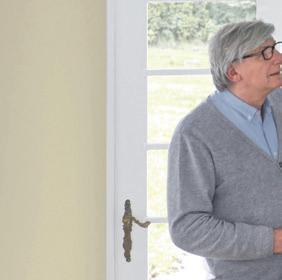



















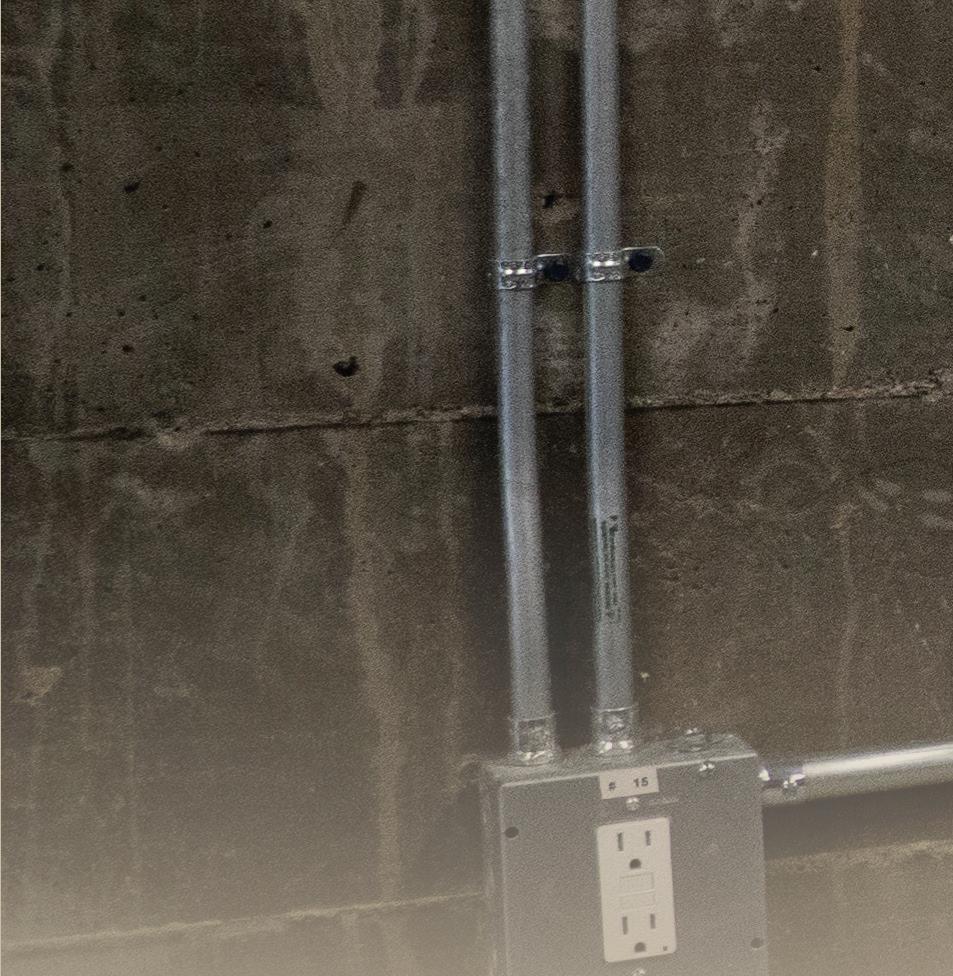





Improve reliability, safety and lower costs at home with an upgraded electrical panel
By Jennah Denney
Every home has an electrical panel, otherwise known as a breaker box. The design hasn’t changed much over the years, but the smart technology-enabled electrical panel is innovating this household appliance.
Smart breaker boxes—which can operate on their own or in conjunction with a standard electrical panel—are an alternative for households looking to save energy.
Upgrading to smart breaker boxes can make people’s home electrical systems safer and more reliable. It’s recommended to hire a qualified electrician to install the smart panel, which can be done using a home’s existing electrical wiring and infrastructure.
Many smart breaker boxes are designed to easily connect to other smart devices in your home. With the capacity to remotely monitor and adjust energy consumption, these devices provide several advantages that make them a worthwhile investment for anyone looking to consume less energy.

One advantage smart breaker boxes provide is convenience for homeowners to monitor and control how much energy they use.
With smart circuit breakers, you can receive real-time data that allows you to pinpoint appliances or devices that consume excessive energy. This real-time tracking allows consumers to adjust their energy use where needed, which ultimately saves money on monthly energy bills, reduces energy waste and is good for the electric grid.
Smart breaker boxes are all about managing your electric load. While the technology to track how much energy a home uses has been available for years, the ability to control how that energy is used is new. A smart breaker box can reveal how much power each circuit is using and turn each one on or off.

Some smart breaker boxes allow you to establish schedules based on importance, such as refrigeration and heat to be on 24/7, but less important loads like Wi-Fi or the television to turn off during scheduled times when no one is home.
Smart breaker boxes offer additional benefits for those with home solar systems. Smart breaker boxes help solar energy systems run more efficiently by determining how much energy is being used and how it can be stored. Through intelligent load management, they can provide longer battery backup life for those with energy storage.
Additionally, integration with other smart home devices, like thermostats and virtual assistants, further enhances the connected-home ecosystem.
Safety in electrical devices is highly important to consumers, and smart breaker boxes provide enhanced safety features that consumers appreciate. Smart breaker boxes can identify abnormalities



and other potential electrical problems, then quickly shut off power supply if a circuit shorts or becomes overloaded, avoiding electrical fires and other dangers. Many smart breaker boxes include surge protection to help protect against power spikes and other issues.
Smart breaker boxes aren’t just for consumers—electric utilities are using them, too. A primary advantage of these devices is that they allow for more efficient and reliable energy distribution. With the ability to detect faults within the system, electric utilities can quickly respond to issues and minimize outage times for consumers—ultimately managing the grid more efficiently.
There’s no denying smart home technologies have changed how we manage homes, and smart breaker boxes are no exception. Smart breaker boxes help electric consumers and utilities in multiple ways.
With advanced safety features, realtime energy tracking and control, and the ability to use energy more efficiently, these devices are a smart investment for anyone who wants to make their home’s system more reliable, safer and costeffective.

When
the
By Michael Leitman
Once pursued by only the most tech savvy of consumers, smart home technologies are becoming increasingly common to enhance home convenience, comfort and safety.
Smart technologies have proliferated as the “internet of things” have grown to include home security and safety systems, lighting, entertainment, HVAC systems and appliances.
Consumers are interested in a variety of technology combinations and uses for their homes. Regardless of the applications, here are three key tips to keep in mind when integrating smart technologies into your home.
Ensure devices can communicate with each other. This might seem like a no-brainer, but compatibility is vital to ensuring convenience is not overcome by annoyance. One way of ensuring compatibility is choosing a single brand for as many applications as possible. Another option is a central hub to coordinate and control various devices. Many of the hubs available today offer additional features as well, including speakers, routers or displays.
One major consideration for all these technologies is a fast and reliable internet and Wi-Fi connection.
Enable all security measures to prevent hacking. Adding smart devices to your home can increase the surface area that bad actors can use to hack equipment, increasing the importance of cybersecurity measures. Reduce risks by choosing smart devices with built-in security features and ensuring these features are all turned on. It is also important to replace default usernames and passwords with strong unique versions, enabling dual and/or biometric authentication, and running software updates when available.
If you are controlling your home devices from your phone, tablet or laptop, do not do so while using unsecured public Wi-Fi networks.
Look for technologies to help control and manage home energy use. Smart home technologies can be a great way to control and manage home energy use. If you are looking into home automation, devices like smart thermostats, grid controllable water heaters, and schedulable or motion-controlled indoor and outdoor lighting can be smart ways to save money on your electric bill.
When used wisely and efficiently, smart home technologies can add great convenience to everyday life. Keep these tips in mind as you integrate smart devices into your home.
April is filled with celebrations of nature, including Earth Day, Arbor Day and National Gardening Month.
Many states and cities have events to help keep their land clean, beautiful and filled with greenery. This year, turn your focus closer to home.
If you have your own yard or garden, take the time this month to plant a tree. From large to small, there are options for every space.
Dogwood
Blooming in more than one color, dogwoods offer more to our planet than just beauty.
These flowering trees offer pollen to pollinators such as bees, and are a food source for birds, mammals and insects.
Dogwoods also brighten wooded areas and yards with their pink, red or white blooms. These trees are usually one of the first to add color to the landscape in the spring.
Dogwoods can grow as tall as 20 feet.
Chastetree
If you’re looking for something that would fit into your garden, look no further than the chastetree.
Although this plant is categorized as a tree, it resembles a bush. This tree has purple, white and pink blooms in the summer and can grow to at least 8 feet tall.
A friend to small yards, this colorful plant also provides nectar to butterflies, hummingbirds and bees, and offers seeds to smaller birds.

Another vibrant option for your yard, the crepe myrtle is a winner in the South because it handles heat and humidity well once it’s established.
The tree’s white or pink flowers provide food for many pollinators, including bees and butterflies. The crepe myrtle’s seeds also provide food to birds in the early winter.
Although this tree grows to nearly 20 feet tall, it is sure to fit right in with other elements of nature that call your yard home. n








































863-946-6200 (member services) 844-201-7203 (24-hour phone payments) www.gladeselectric.com
7 a.m. to 6 p.m. Monday through Thursday
26733 U.S. Hwy. 27
P.O. Box 519
Moore Haven, FL 33471
214 SR 70 W. Lake Placid, FL 33852
Via the SmartHub app
~ 863-946-6200 (24/7 outage reporting)
Please have your account number ready.
John “Jack” Coxe, President, District 8 Lake Josephine, 863-414-3833
Lee Henderson, Vice President, District 6 Highlands Park, 863-633-9281
Shannon Hall, Secretary/Treasurer, District 4 Lakeport and Brighton, 863-946-3242
Donnie Lundy, Trustee, District 1 Moore Haven, 863-946-0402
Barney Goodman, Trustee, District 2 Hendry County, 561-414-8737
Mike Pressley, Trustee, District 3 Ortona and Palmdale, 863-673-9158
Brad Oxer, Trustee, District 5 Venus and Hicoria, 863-441-1866
Fred Tagtmeier, Trustee, District 7 Lorida, 863-214-4994
Angela Hodges, Trustee, District 9 Okeechobee, 863-801-3140
The Board’s next meeting is at 6:30 p.m. April 11 at the Moore Haven Middle-High School. Any changes are posted in the lobby of both district offices.
Jeff Brewington, CEO
Courtney Brown, Chief Personnel Officer
Jennifer Koukos, Chief Communications Officer
Jennifer Manning, Chief Financial Officer
Michael Roberge, Chief Operations Officer
We listened and so did you.
A few years back, the feedback we received from you regarding the cooperative’s annual meeting overwhelmingly said to make it easier to participate. This year, in addition to mail-in ballots, we added online voting through our SmartHub app. Voting opened Monday, March 4, and in just three days 686 of you had already cast your ballots. A reminder email we sent Tuesday really hit the mark with 448 of you casting your ballots on that day alone.
Your participation level in three short days confirms a quorum for the 79th Annual Meeting and already beats last year’s member participation by 123 votes. Thank you for voting. This should be a record-setting year.
Since attendance in person is no longer required to participate in the annual meeting, you can view a recording of the meeting the next day. Just look for the video on our Facebook page or at www.gladeselectric.com/2024annualmeeting.
We are always open to improvement, so let us know if there’s anything else we can do to make your participation in the annual meeting easier. Thank you again for your outstanding participation.



Speaking on another matter where we listened to you, the cooperative’s fiber-to-the-home broadband project is well on its way to every member who desires it. As I write, 558 members are now connected to world-class high-speed internet. Another 229 members are awaiting the install team.
We would have had more connections by now, however, there was a hold up running the main fiber line across the Caloosahatchee River, which will serve the Ortona and Morgan Henderson (Venus) areas of our system.
With the help of U.S. Rep. Scott Franklin, that crossing permit was expedited and is now scheduled. Soon, more of you will be able to enjoy a service that has become as important in our lives as electricity itself.
To sign up for service or to check your timeline for availability, visit www.conexonconnect.com or scan the QR code on this page.
